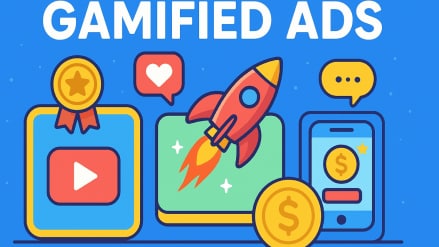Every year around Diwali, brands face the same conundrum. Fastest fingers first to grab a slice of consumer’s attention in a market where every other billboard, Instagram reel, game, banner, TV ad is screaming – Buy me! This year, the industry’s shiny new solution is gamification.
Once dismissed as a gimmick, it is now being repackaged as a serious marketing muscle. Scratch cards, leaderboards, spin the wheel offers, AR try-ons, and trivia contests are how brands plan to pull you in. And the reason isn’t hard to decode.
“Diwali alone can account for 30–40% of annual sales in some categories. Naturally, brands loosen their purse strings and experiment more—whether it’s richer storytelling or engagement-led ideas like gamification,” Vikas Shah, co-founder of BigCity Promotions, told financialexpress.com . What feels like “extra” in a regular quarter, he added, becomes “essential” during the festive peak.
Traditional ads have long struggled with a problem: passivity. A TV spot or banner might deliver impressions, but that doesn’t always translate into action. Gamification, marketers argue, fixes this. At BigCity, layering in gamified mechanics such as scratch cards or prediction games has extended dwell times from just a few seconds to as much as 90 seconds. Passive campaigns convert at about 1–3%. Add rewards, streaks, or levels, and conversion can jump to 8–15%, with repeat engagement from as many as 35% of participants.
Globally, gamified experiences are also said to drive 3–5x higher engagement compared to static ads. The pitch is simple: don’t just watch; play and while you’re at it, shop.
The data game behind the games
But scratch beneath the surface, and the “fun” has a more strategic purpose. For startups like WNNR, gamification isn’t merely about engagement; it’s about data capture. “Engagement alone is not a measure of success,” Trigam Mukherjee, co-founder and CEO of WNNR, said. His platform positions itself as a “gamified data intelligence” tool that helps brands own first-party data, an increasingly scarce commodity in a post-cookie, privacy-conscious world.
Through quizzes, contests, and challenges, WNNR captures behavioural insights that would otherwise be locked inside walled gardens like Meta or Google. In other words, gamified ads are not just serving discounts; they’re extracting intelligence under the guise of entertainment. It’s no secret that festive advertising in India is heavily front-loaded. With the peak shopping window compressed to just 45 days this year, marketers are rushing to make every impression count.
Nidhi Kohli Nandode, marketing head of Flam, noted that the battle for attention is fiercer than ever. “Marketers are expected to front-load their messaging and launch festive ads earlier than usual. With immersive formats, brands can cut through noise and deliver measurable outcomes,” she said.
This pressure is redirecting budgets. While TV and print remain powerful in Tier 2 and 3 markets, the more dramatic reallocation is happening within digital spends. Static banners and generic pre-roll videos are losing out to interactive video, WhatsApp-led campaigns, and gamified journeys. Gamified formats are now present in nearly a quarter of mobile ad campaigns, especially those targeting Gen Z.
The limits of play
Still, there are warning signs. If every brand serves up the same “spin-the-wheel” mechanic, consumers may soon roll their eyes instead of the dice. “Fatigue is a real risk,” admitted Shah. “The answer is variety—prediction games, timed challenges, knowledge-based formats.”
There are compliance headaches, too. In BFSI, gamified reward programs require watertight T&Cs, GST-compliant reward issuance, and fraud checks. And despite 5G rollouts, patchy network quality in semi-urban India still hampers seamless AR or immersive experiences. Add to this cultural quirks—Indians still like to touch, try, and trust before they buy, especially in categories like jewellery or ethnic wear—and the hype needs a reality check.
The bigger question is whether gamification is here to stay or just another seasonal gimmick. A few years ago, it was largely a Diwali “stunt.” Now, with plug-and-play templates and integration with reward platforms, Shah argues it’s scalable enough to become an always-on strategy.
Startups like WNNR are betting on exactly that: gamification as a continuous channel for data capture, not just a festive firecracker. D2C brands in fashion and beauty are already embedding gamified loops into loyalty programs and referrals. FMCG majors are experimenting with receipt-scan contests. BFSI players are using gamified quizzes for onboarding.
Gamified ads may well be the darling of festive 2025. They promise more engagement, better ROI, and juicy data for marketers desperate to stand out in the season’s din. But like all shiny toys, the novelty could wear thin fast. The bigger risk is overkill, when every discount is dressed up as a “challenge” and every brand pretends to be a game master. For now, Indians may play along. But once the festive lights dim, brands will find out whether gamification truly builds loyalty or whether it was just another distraction in a market already bursting with them.
